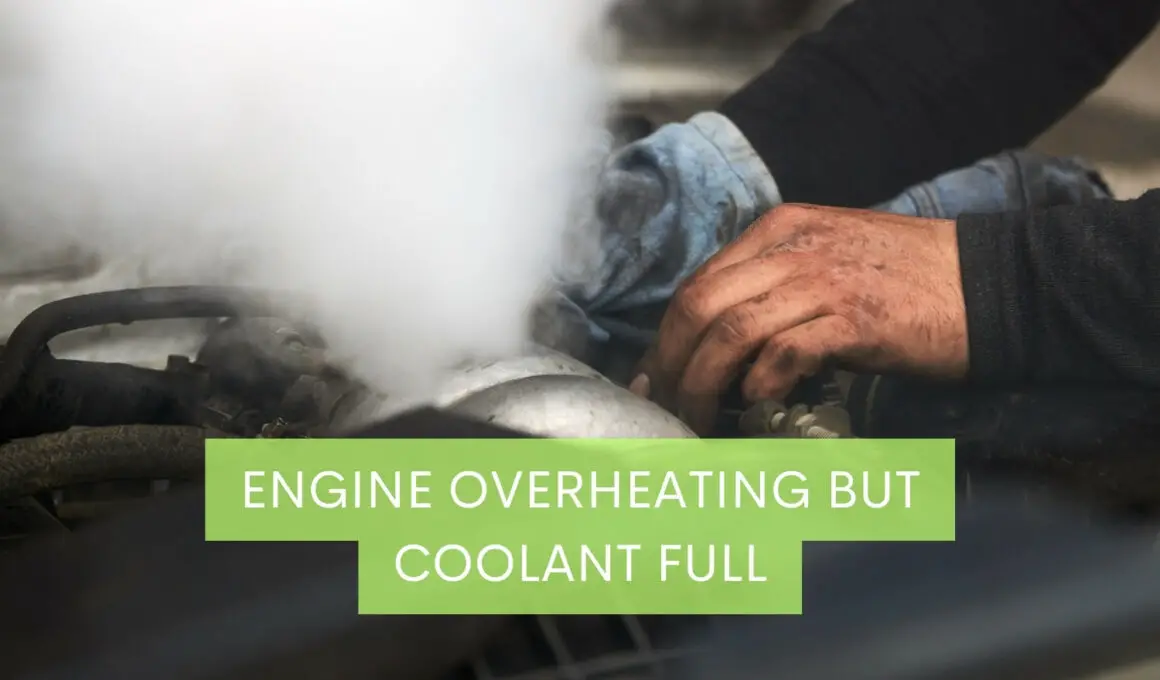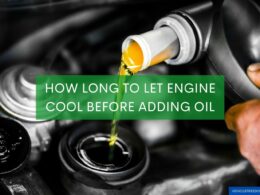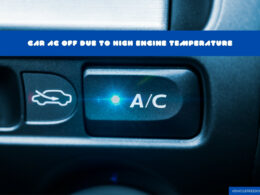In This Article Show
When it comes to maintaining your vehicle’s health, understanding its cooling system is essential. However, certain scenarios can leave even the most knowledgeable car owners scratching their heads – like your engine overheating despite a full coolant reservoir.
This seemingly paradoxical situation can be alarming, as overheating can lead to significant engine damage if not promptly addressed.
In this comprehensive guide, we will dive into the intricacies of your vehicle’s cooling system, explore why your engine might be overheating even when your coolant reservoir is full, and provide effective solutions to get your vehicle back on the road safely.
Whether you’re a novice driver or a seasoned car enthusiast, this guide aims to equip you with valuable knowledge to help you understand and address this weird issue. So, let’s get started!
Understanding Your Vehicle’s Cooling System
The cooling system in a vehicle is crucial to its performance and longevity. It’s designed to regulate the engine temperature, ensuring it operates within the optimum range. Let’s explore how this system functions and why coolant is vital to its operation.
The Role of the Cooling System
At its core, the cooling system removes the excess heat produced by the engine. This heat is generated due to the internal combustion process—where fuel and air mix and ignite to power your vehicle. Too much heat and your engine can suffer severe damage; too little and it won’t operate efficiently.
Components of the Cooling System
The cooling system consists of several interconnected components, each playing a pivotal role:
- Radiator: This component cools the coolant mixture by allowing it to release heat into the atmosphere. It’s generally located at the front of the vehicle to benefit from the incoming air flow as the vehicle moves.
- Water Pump: This component circulates the coolant through the engine and the radiator. It ensures a constant flow, allowing the coolant to consistently absorb and release heat.
- Thermostat: The thermostat controls the flow of the coolant. It remains closed until the engine reaches its optimal operating temperature. Once the engine is hot enough, the thermostat opens to allow coolant circulation.
- Coolant Hoses: These hoses connect the cooling system components, enabling the coolant to travel throughout the engine and radiator.
- Coolant Reservoir: This is where the excess coolant is stored. When the engine cools down and contracts, coolant from the reservoir is sucked back into the system to replace the volume lost due to contraction.
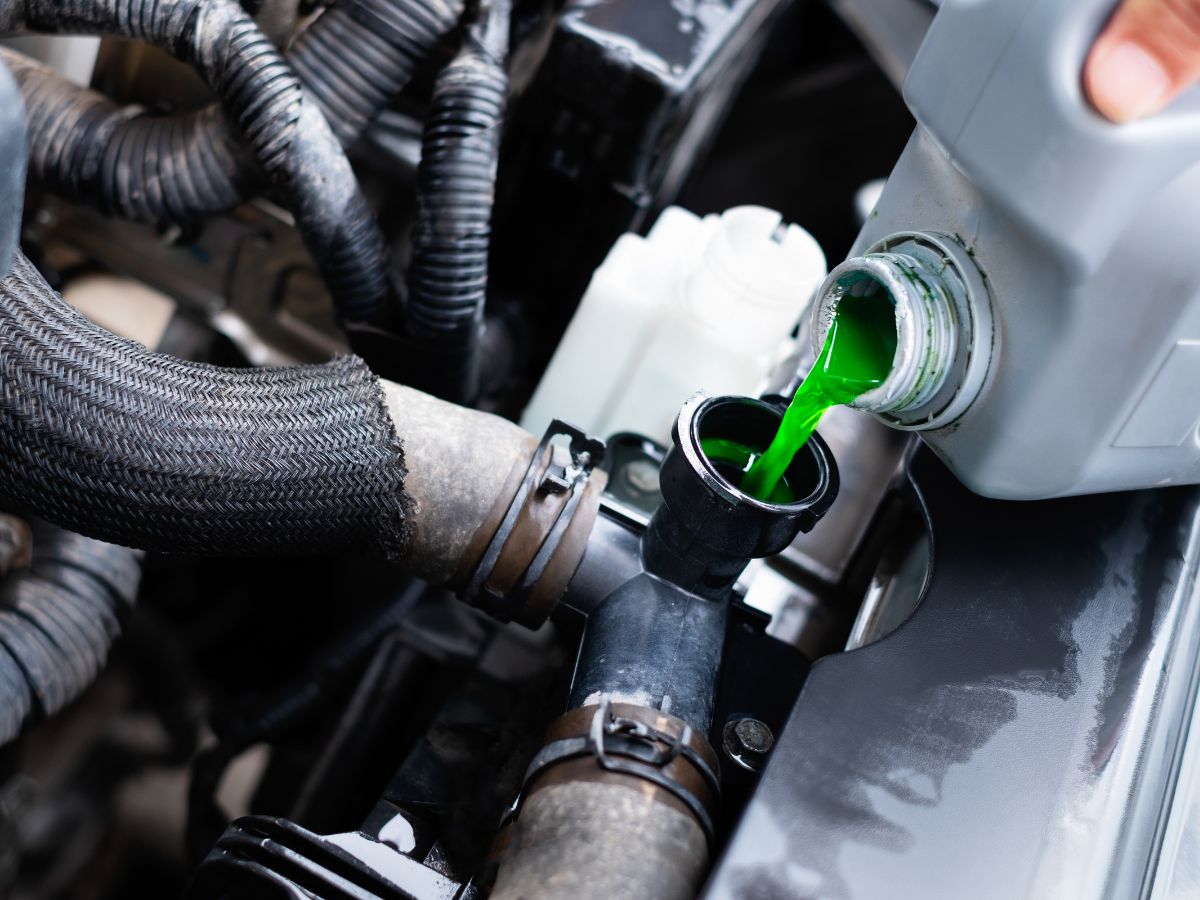
The Role of Coolant
Coolant, a mixture of antifreeze and water, is the lifeblood of the cooling system. It absorbs the heat from the engine and transports it to the radiator, where the heat is expelled. The cooled coolant then returns to the engine to absorb more heat, thus maintaining a healthy engine temperature.
A properly filled coolant reservoir is crucial as it ensures the cooling system has enough volume to operate effectively. A full reservoir also helps maintain system pressure, which increases the boiling point of the coolant and improves heat transfer efficiency.
Understanding the cooling system and its components is the first step towards diagnosing issues like engine overheating despite a full coolant reservoir.
What It Means When Your Engine Overheats Despite a Full Coolant Reservoir
Under normal circumstances, a full coolant reservoir should mean your engine is well-equipped to manage heat. So, if your engine is overheating despite a full tank, it indicates a problem somewhere within the cooling system that is preventing heat from being effectively transferred and dissipated.
Let’s delve into the dynamics of this situation.
What Does Overheating Signify?
Overheating signifies that the engine is operating at temperatures above its optimal range. If the temperature gauge on your dashboard is pointing towards ‘hot’, or if you see steam or smoke emanating from under the hood, it’s a clear sign that your engine is overheating. Overheating can lead to significant engine damage, including a blown head gasket or even a cracked engine block.
Why Can Overheating Occur Despite Full Coolant?
While the coolant level is a critical aspect of the cooling system, it’s only one piece of the puzzle. The cooling system comprises several other components; if any of them fail or underperform, it can lead to engine overheating.
For instance, a faulty thermostat might not open properly, restricting the coolant flow. Or a broken water pump might not circulate the coolant efficiently through the system.
Issues like a clogged radiator or a failed radiator fan that can’t draw enough air through the radiator to cool the coolant can result in overheating.
Moreover, the quality of the coolant also matters. Suppose the coolant is old and has lost its anti-corrosive and anti-heat properties. In that case, it might not absorb and dissipate heat effectively, leading to overheating despite the reservoir being full.
Common Causes of Engine Overheating Despite Full Coolant
As mentioned earlier, your engine can overheat despite a full coolant reservoir due to a number of reasons. Understanding these potential causes is vital to effectively diagnose and resolve the issue. Let’s take a closer look at the most common causes:
1. Faulty Thermostat
The thermostat in your cooling system regulates the flow of coolant based on the engine’s temperature. When working correctly, it opens to allow coolant to flow once the engine reaches its optimal operating temperature. If the thermostat is faulty, it may not open as it should, restricting the flow of coolant and causing the engine to overheat.
2. Clogged Radiator
Over time, your radiator can get clogged with debris and sediment, which can restrict the flow of coolant. If the coolant can’t flow freely through the radiator, it won’t be able to release its heat effectively, resulting in an overheated engine.
3. Non-Functional Water Pump
The water pump plays a crucial role in the cooling system by circulating coolant through the engine and radiator. If the pump is malfunctioning or broken, it will impede the circulation of coolant, preventing heat from being effectively dissipated.
4. Damaged Coolant Hoses
Coolant hoses are responsible for transporting coolant between the engine, radiator, and coolant reservoir. If these hoses are damaged or blocked, it can disrupt the flow of coolant and lead to overheating.
5. Blocked or Damaged Coolant Reservoir
The coolant reservoir allows the cooling system to draw in coolant as needed and provides a place for coolant to overflow when the engine is hot. If the reservoir is blocked or damaged, it can prevent the proper flow of coolant into the system, leading to overheating.
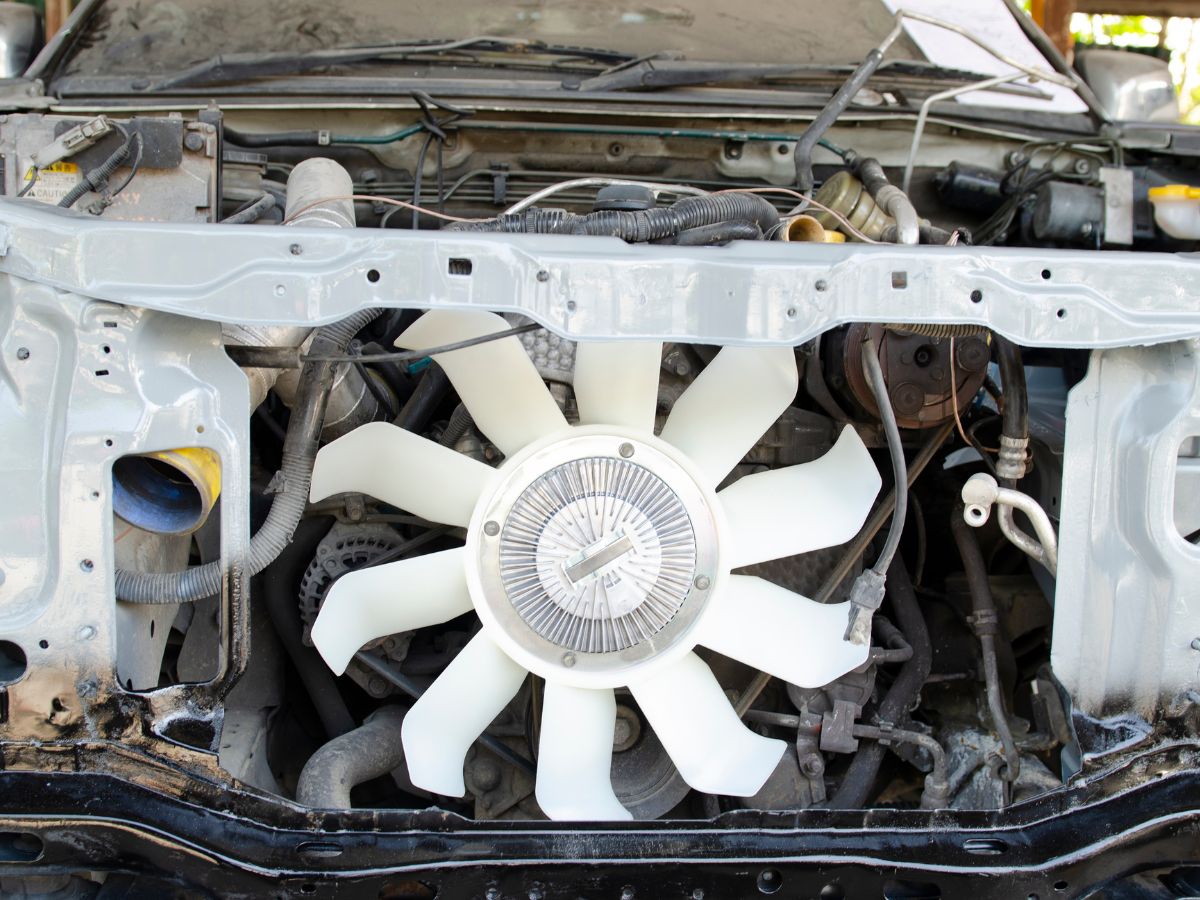
6. Faulty Radiator Fan
The radiator fan helps pull air through the radiator, aiding in cooling the engine. If the fan is faulty, it won’t cool the coolant as efficiently, potentially leading to engine overheating.
7. Old or Improper Coolant
Using old or the wrong type of coolant can also lead to overheating. Over time, coolant loses its anti-heat and anti-corrosive properties, reducing its ability to absorb and dissipate heat.
Similarly, if the coolant-to-water ratio is incorrect or you’re using a type of coolant not recommended for your vehicle, it can negatively affect the cooling system’s efficiency.
How to Diagnose Engine Overheating Issues
If your engine is overheating despite a full coolant reservoir, it can be a bit of a head-scratcher. However, by conducting some diagnostic tests, you can narrow down the possible causes and find a solution. Here are steps to help you diagnose the problem:
Step 1: Check the Thermostat
A common cause of engine overheating is a faulty thermostat. Once the engine is warm, you can check its functioning by feeling the upper radiator hose. If the hose is not hot, it means the thermostat is likely stuck closed, preventing coolant from flowing to the radiator.
Step 2: Inspect the Radiator
Look for visible signs of blockage or damage to the radiator. This includes checking for leaks and any debris that might be blocking the external vents. You can also check for internal clogs by running the engine with the radiator cap off. If the coolant isn’t flowing freely, there may be a blockage.

Step 3: Check the Water Pump
Leaks around the water pump or a loose pulley can indicate a faulty water pump. You can also check the coolant flow in the radiator with the cap off (be careful as the coolant will be hot). If there’s little to no flow, the water pump might fail.
Step 4: Inspect Coolant Hoses
Examine the coolant hoses for any visible damage such as cracks, leaks, or bulges. Also, feel them to see if they’re unusually hard or soft, which could indicate a problem.
Step 5: Check the Coolant Reservoir
Inspect the coolant reservoir for any signs of blockage or damage. If there’s a blockage, the system may not be drawing in coolant as needed, leading to overheating.
Step 6: Test the Radiator Fan
With the engine running and the car stationary, watch the radiator fan. It should kick in when the engine reaches a certain temperature. If it doesn’t, the fan might be faulty.
Step 7: Assess the Coolant Condition
Check the condition and level of the coolant. If it’s dirty, it might be time for a change. Also, ensure you’re using the right type of coolant for your vehicle and that the coolant-to-water ratio is correct.
These checks will help you identify potential issues causing your engine to overheat despite a full coolant reservoir.
Now let’s discuss how to fix these issues once you’ve identified them. Remember, if you’re unsure or uncomfortable performing these checks yourself, it’s best to seek help from a professional mechanic.
How to Fix Engine Overheating Issues
Once you’ve identified the cause of your engine overheating, the next step is to fix the issue. Here’s how to address the common causes of engine overheating despite a full coolant reservoir:
1. Replace a Faulty Thermostat
If your thermostat is not opening properly, it will need to be replaced. This process involves draining the coolant, removing the old thermostat, installing a new one, and then refilling the coolant. Depending on your level of mechanical skill, you may be able to do this yourself, or it may be a job for a professional mechanic.
2. Unclog or Replace the Radiator
If your radiator is clogged or damaged, it will need to be cleaned or replaced. Cleaning might involve using a radiator flush product to remove any debris. However, if the radiator is seriously damaged, replacement will be necessary.
3. Repair or Replace the Water Pump
A malfunctioning water pump will likely need to be replaced. This can be a complicated job, requiring the removal and replacement of various parts, and is typically best left to a professional mechanic.
4. Replace Damaged Coolant Hoses
If your coolant hoses are damaged, they should be replaced to ensure a proper flow of coolant. This relatively straightforward task involves removing the old hoses, installing new ones, and refilling the coolant.
5. Clear Blockage or Replace Coolant Reservoir
If your coolant reservoir is blocked or damaged, try to clear the blockage. If that’s not possible or the reservoir is damaged, you’ll need to replace it.
6. Replace Faulty Radiator Fan
A faulty radiator fan will need to be replaced to ensure proper air flow through the radiator. This process involves removing the old fan, installing a new one, and reconnecting the fan motor wiring.
7. Change Old or Incorrect Coolant
If the coolant is old, drain it and refill the system with new, manufacturer-recommended coolant. Always ensure the coolant-to-water ratio is correct.
Addressing these issues should resolve your engine overheating problem. However, if the overheating persists, it’s important to consult with a professional mechanic as the issue could be more serious, such as a blown head gasket or a cracked engine block.
Preventive Measures to Avoid Engine Overheating
Prevention is often better than a cure. Regular maintenance and vigilance can help you avoid engine overheating issues in the first place. Here are some preventive measures to keep your engine running cool:
1. Regularly Check the Coolant Level
Make sure your coolant is always at the right level. Check it regularly, especially before long trips, and refill as necessary. Remember, a coolant system that is even slightly low on coolant can cause overheating issues.
2. Use the Right Coolant
Always use the coolant type recommended by your vehicle’s manufacturer, and maintain the correct coolant-to-water ratio. The wrong type or an improper mix can lead to decreased cooling efficiency.
3. Regularly Inspect Your Cooling System
Regularly check the thermostat, radiator, water pump, coolant hoses, and coolant reservoir for signs of wear, damage, or malfunction. Catching and addressing these issues early can prevent overheating.
4. Keep the Radiator Clean
Ensure that the exterior of the radiator is free from debris and that the coolant is clean. Use a radiator flush product periodically to keep the inside of the radiator clean.
5. Monitor Your Engine Temperature
Keep an eye on your engine temperature gauge while driving. If the temperature starts rising towards the red zone, pull over and let the engine cool down to prevent damage.
6. Service Your Vehicle Regularly
Regular servicing by a professional mechanic can help catch potential issues before they turn into serious problems. Make sure the cooling system is included in the routine checks.
7. Drive Carefully
Rough driving can put more strain on your engine, causing it to heat up. Avoid aggressive driving and carrying heavy loads that your vehicle wasn’t designed for.
Following these preventive measures will help ensure that your vehicle’s engine stays cool, reducing the chances of overheating despite a full coolant reservoir.
Frequently Asked Questions about Engine Overheating and Coolant
Why does my engine overheat when I have a full reservoir of coolant?
Various issues can cause your engine to overheat even with a full coolant reservoir. These include a malfunctioning thermostat, clogged or damaged radiator, faulty water pump, or blocked coolant hoses.
Can I drive my car if it’s overheating but the coolant is full?
It’s not recommended. Overheating can cause serious damage to your engine. If your vehicle is overheating, it’s best to pull over and let the engine cool down.
How often should I check my coolant level?
It’s a good practice to check your coolant level at least once a month and before long trips. Ensure the engine is cool before checking the coolant level to avoid burns.
Why is my coolant full but not circulating?
The problem could be a faulty thermostat, a blockage in the coolant passages, or a failed water pump. These issues prevent the coolant from circulating properly, leading to overheating.
How can I tell if my water pump is failing?
Symptoms of a failing water pump include coolant leaks at the front-center of your car, an overheated engine, water pump pulley looseness, or a high-pitched whining sound from the front of your engine.
Can I use water instead of coolant in an emergency?
While not ideal, distilled water can be used in an emergency but should be replaced with the correct mix of coolant and water as soon as possible. Water alone doesn’t have the same cooling properties or boiling point as coolant, and it lacks the corrosion inhibitors found in coolant.
Can I replace a thermostat or water pump myself?
If you’re handy with cars and have the right tools, you can replace a thermostat or water pump yourself. However, if you’re not confident in your abilities, it’s best to let a professional handle it to avoid causing further damage.
Remember, regular vehicle maintenance and a good understanding of how your cooling system works can help prevent engine overheating and save you from costly repairs down the line.
It’s always important to consult a professional mechanic if you’re unsure about diagnosing or fixing an issue with your car.






